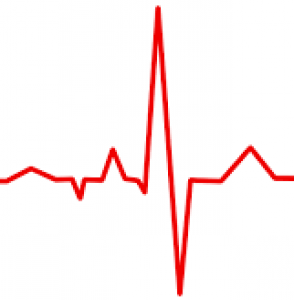
Our not so secret secret…
It has made headlines this week, as it seems to every year – A&E departments are not managing to meet their targets to see 85% of patients within four hours. With reports of patients waiting in corridors and even dying whilst waiting to be seen, you’d be forgiven for believing that this is a new catastrophic result from the flu epidemic or the beast from the east.
Though the recent weather has indeed put extra pressure on departments, we have been flying dangerously low to the 85% target for years.
The crazy thing is that I would be very surprised if we had been reaching it at all.
Number fiddling
I have worked in Accident and Emergency Departments as a junior doctor, one in particular busy city centre hospital formulated most of my experience. There were a number of ways to circumvent a patient being recorded as having “breached,” and these were utilised frequently at busy times to ensure that we were meeting our targets.
Having beds backed out of the doors was a regular occurrence, perhaps even the norm. At night it wasn’t unusual to have a wait time of 9 hours to be seen by a doctor. Some ways around this were to “admit” a patient to one of the A&E cubicles, which physically did not exist and essentially the patient was still waiting in A&E.
If a patient had been waiting for a bed too long and was reaching their 12 hour target they could be “999-ed,” which essentially meant they were recorded as being too sick to be moved, which often was on over-exaggeration to ensure that they weren’t recorded as a breach.
Whilst these practices may seem crazy they are used widely to ensure that departments aren’t put on diverts due to overcrowding, something which is kept as a last resort – we know it is the same everywhere.
What does this mean?
Most people who have recently attended their A&E will tell you that they had to wait a while. For most patients this will be okay, uncomfortable and frustrating but they will not come to any particular harm. Nursing staff will triage you quickly based on your symptoms and some basic observations into a category which will determine how quickly you will be seen, and so most patients who are ill will be pushed further up the queue.
Some conditions however, do not serve triage well. For example the back pain associated with a kidney stone (something generally not seen to be imminently life threatening,) can be an awful lot like a developing aortic dissection, (something which very much is life threatening.) I choose this example not from my imagination but as this is something that has happened in a department in which I have worked.
Long waiting times can kill.
When you look at it in this context an 85% target seems scary. We used to aim for, and achieve a 95% target.
So what changed?
- Staffing levels
- Relative levels of funding
- Poor social care
- Decreased numbers of beds in hospitals
- An over stretched primary care system
- Decreasing staff morale leading to high turnover of staff and low recruitment levels.
Just to name a few factors…
The Royal College of Emergency Medicine has issued a request this week to it’s members. It has asked for us to go to our local MPs and request further support and funding for our Emergency Departments. I’ll be writing to mine, I hope I’ve convinced you to write to yours.
